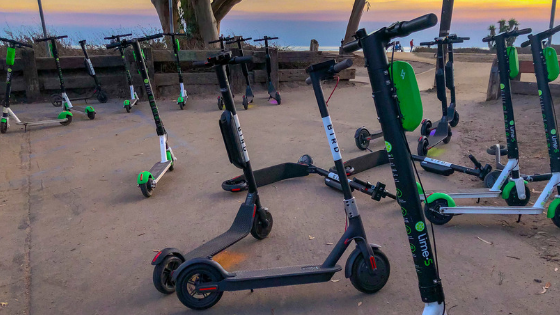These days, it seems like every street corner has a row of scooters, parked and patiently waiting for riders. And if the scooters aren’t parked, they’re in motion – zipping along sidewalks and forcing pedestrians to jump out of the way.
Electric scooters are the latest mobility trend, led by companies like Bird and Lime. Bird alone has put scooters in 120 cities in 14 months, with Lime close behind.
But these scooters aren’t just bringing cheap and fun transportation. They’re also bringing controversy and major safety risks. Now, electric scooter companies are getting serious about safety.
Current Safety Hazards
Last year, the city of Austin, Texas, in conjunction with the Centers for Disease Control (CDC) conducted a three-month study of scooter safety in Austin.
The results were not flattering for Bird and Lime.
The study identified 271 people with potential scooter injuries. Of those people, 160 were confirmed scooter injuries, 32 were probable cases, 46 were suspect cases, and 32 were not cases.
Of the 192 people examined further, 48% of them were 18 to 29 years old, with a median age of 29 across all cases. Nearly half of all riders (48%) suffered head injuries, 70% had upper limb (arm, hand, shoulder) injuries, and 55% had lower limb (legs, feet, knee, ankle) injuries. Many patients had multiple injuries.
Almost half of the riders surveyed had severe injuries. 84% of those people had bone fractures, though there were also nerve, tendon, or ligament injuries. 15% of all riders showed symptoms suggesting traumatic brain injuries.
Austin isn’t unique – riders in Los Angeles, Denver, the District of Columbia and elsewhere have all reported injuries.
Scooter Prohibitions and Legal Woes
Why are so many scooter riders getting injured?
For one thing, the scooter industry’s initial attitude of “move fast and break things” is a major contributor.
Helmets are not provided with scooters, despite the fact that scooters can go up to 20 miles per hour. All users must sign a user agreement before they can rent a ride, and in signing it they agree to assume all liability for injuries or medical conditions.
In addition, between safety hazards and scooters carelessly littering sidewalks, many cities are moving to ban scooters.
Ann Arbor, Michigan began confiscating the scooters, saying that they were violating a city ordinance. New York City views the scooters as illegal, with city officials arguing that the amount of traffic in Manhattan makes scooters unsafe. Washington, D.C. looked into banning them in early July.
The Next Generation of Scooter Safety
With bans and a bad reputation looming, scooter companies are looking to defend their good names and restore consumer trust.
Lime has given away 250,000 free helmets to riders, invested more than $3 million in rider education, and upgraded scooters for urban conditions. Bird launched similar safety efforts, as well as a s.h.a.r.e. Safe Streets tour to give riders safety training.
Both companies have also launched safety advisory boards, with the intention of influencing policy more than scooter hardware. The focus, it seems, is not solely on safety but on presenting scooters as an environmentally healthy alternative to cars and public transit.
Their hope is to change the narrative around electric scooters, from a dangerous gimmick to a ride for a brighter future in transportation equity and environmental responsibility.
As for safety deliverables? Bird and Lime were both scant on the details.
